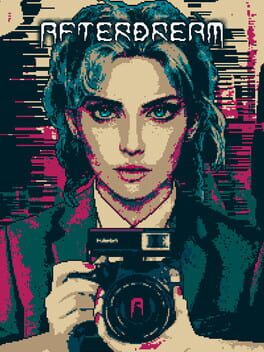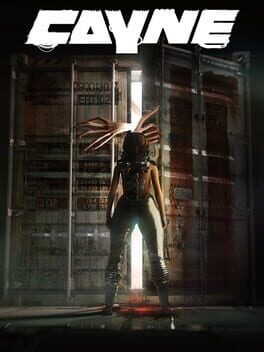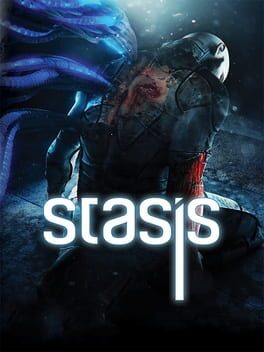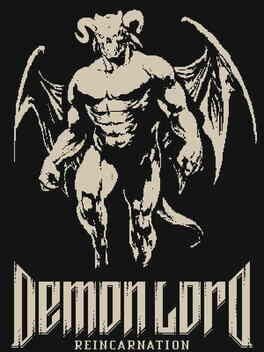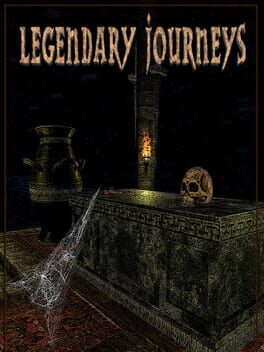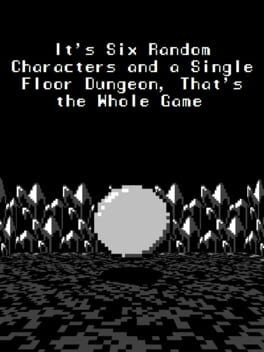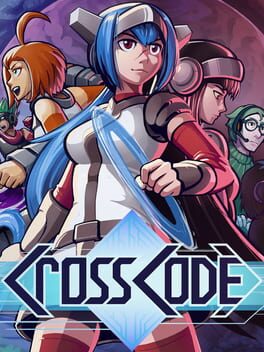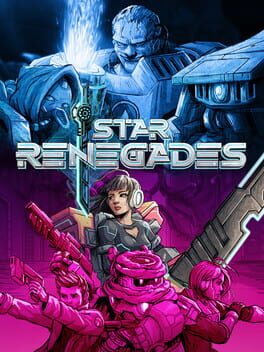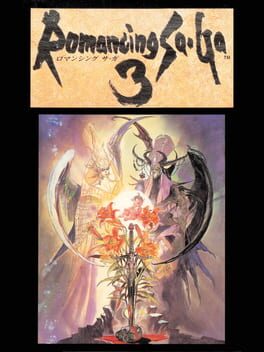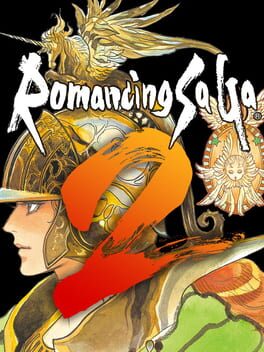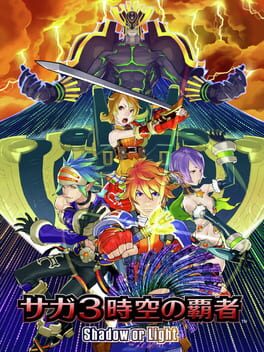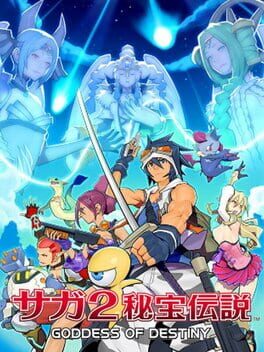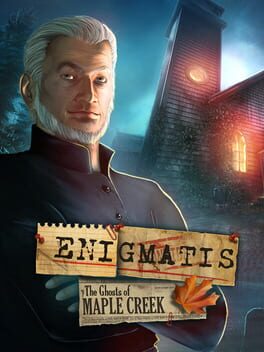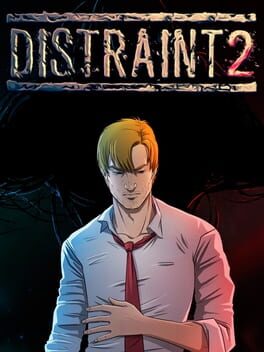jademonkey
2023
Another solid entry from Jesse Makkonen. As with his previous games, the visuals have a unique and appealing style, and the music is quite good, working together to create an excellent dreamlike moodiness. It's hard to overstate how much I enjoyed the atmosphere. The puzzles were straightforward, but still felt satisfying, and the camera mechanic was simple but impactful. The plot feels a bit thin here, and while there's a lot of heart to it, I didn't quite get as emotionally invested as I'd hoped. I think there needed to be a bit more screentime for the major characters to really get me invested for the finale. Still, I had a good time with Afterdream and easily recommend it to fans of horror adventure games.
2017
Despite the graphical upgrade, this just didn't live up to Stasis.
The puzzles were frequently completely unintuitive in Cayne. I've played a fair number of adventure games and rarely have to use guides on the modern ones. That wasn't the case here. I really don't know how they intended people to come upon the solution, outside of brute forcing every possible combination of items in your inventory and in the environment. This issue is compounded by the slow movement and backtracking -- unintuitive puzzles are much more frustrating when it takes a couple of minutes to even check something.
I don't think the writing was as good, either. The main character this time around is a pregnant young woman who has been abducted for some sort of experiment. She quips left and right throughout the game, which feels very at odds for how horrifying her situation and environments are. I think a couple of nervous jokes would have worked well, but, I was just taken out of the horror a bit too much for my liking with how blasé she seemed. Additionally, where the lore PDAs were the highlight of Stasis, they felt a bit too cartoonishly evil here across the board. Stasis had a few cartoonishly evil characters, but they were mixed in among a lot of characters who felt like regular people, if frequently a bit apathetic or greedy.
That's not to say the game is terrible. There's some great body horror going on, and the environment are once again extremely well done. The sound effects and music were solid. Even if the moment to moment writing felt a bit worse, the overall plot was interesting given how short the game is, and I enjoyed seeing the world of Stasis expanded. It would have still been a 3 star game despite my qualms with the writing if it didn't do all of the Bad Adventure Game things. Still excited to move on to Bone Totem, though!
The puzzles were frequently completely unintuitive in Cayne. I've played a fair number of adventure games and rarely have to use guides on the modern ones. That wasn't the case here. I really don't know how they intended people to come upon the solution, outside of brute forcing every possible combination of items in your inventory and in the environment. This issue is compounded by the slow movement and backtracking -- unintuitive puzzles are much more frustrating when it takes a couple of minutes to even check something.
I don't think the writing was as good, either. The main character this time around is a pregnant young woman who has been abducted for some sort of experiment. She quips left and right throughout the game, which feels very at odds for how horrifying her situation and environments are. I think a couple of nervous jokes would have worked well, but, I was just taken out of the horror a bit too much for my liking with how blasé she seemed. Additionally, where the lore PDAs were the highlight of Stasis, they felt a bit too cartoonishly evil here across the board. Stasis had a few cartoonishly evil characters, but they were mixed in among a lot of characters who felt like regular people, if frequently a bit apathetic or greedy.
That's not to say the game is terrible. There's some great body horror going on, and the environment are once again extremely well done. The sound effects and music were solid. Even if the moment to moment writing felt a bit worse, the overall plot was interesting given how short the game is, and I enjoyed seeing the world of Stasis expanded. It would have still been a 3 star game despite my qualms with the writing if it didn't do all of the Bad Adventure Game things. Still excited to move on to Bone Totem, though!
2015
Looks like I got distracted from Spooktober a bit too early -- Stasis was the next game on my list and happens to be an excellent dark sci-fi horror isometric point and click adventure.
The story is a pastiche of just about every sci-fi horror trope going back to Alien, but it manages to have its own character. You wake up on a ship that turns out to be a research vessel -- in deep space to avoid having to comply with regulations, of course. You don't have amnesia, but you also don't know how you ended up on the ship. You start off seeing instruments for flesh harvesting and some cloning projects gone awry, and things only continue to spiral into the darker and more uncomfortable from there.
The dialogue is generally well written, though there are a few lapses that had me raising an eyebrow. What really gives the game its narrative oomph is the PDAs from various crew members scattered about the ship. They not only fleshed out the greater world, but provided interesting insights into the crew and the sordid and sometimes sultry details of what happened leading up to the start of the game.
The isometric view along with the excellently crafted and very detailed 2D graphics, evoked a bit of the feel of the old infinity engine games. The level design along with well used lighting, and some truly weird and eerie sound effects set an superbly bizarre and disconcerting mood for the story.
As far as the point and click adventure puzzles... they were mostly ok. There is a bit of moon logic here and there, and one early puzzle had a couple more steps than it needed leaving me confused as to whether I was on the right track or not. Mostly, the game could have used some extra clues as to why actions were failing to get you back on the right track. Still, I only resorted to a guide once at the very beginning, and many of the puzzles were satisfying to solve.
All in all, it's one of my favorite games I've played this year, and I've played a lot of games this year. I've heard the sequel, Bone Totem, was an improvement in just about every way, so I'm pretty darn excited to start that up next.
The story is a pastiche of just about every sci-fi horror trope going back to Alien, but it manages to have its own character. You wake up on a ship that turns out to be a research vessel -- in deep space to avoid having to comply with regulations, of course. You don't have amnesia, but you also don't know how you ended up on the ship. You start off seeing instruments for flesh harvesting and some cloning projects gone awry, and things only continue to spiral into the darker and more uncomfortable from there.
The dialogue is generally well written, though there are a few lapses that had me raising an eyebrow. What really gives the game its narrative oomph is the PDAs from various crew members scattered about the ship. They not only fleshed out the greater world, but provided interesting insights into the crew and the sordid and sometimes sultry details of what happened leading up to the start of the game.
The isometric view along with the excellently crafted and very detailed 2D graphics, evoked a bit of the feel of the old infinity engine games. The level design along with well used lighting, and some truly weird and eerie sound effects set an superbly bizarre and disconcerting mood for the story.
As far as the point and click adventure puzzles... they were mostly ok. There is a bit of moon logic here and there, and one early puzzle had a couple more steps than it needed leaving me confused as to whether I was on the right track or not. Mostly, the game could have used some extra clues as to why actions were failing to get you back on the right track. Still, I only resorted to a guide once at the very beginning, and many of the puzzles were satisfying to solve.
All in all, it's one of my favorite games I've played this year, and I've played a lot of games this year. I've heard the sequel, Bone Totem, was an improvement in just about every way, so I'm pretty darn excited to start that up next.
I love the idea of combining SaGa mechanics and blobbers, but this one is a bit too minimalistic for my tastes. There's no inventory/equipment, no influencing stat increases or skills/magic learned, and random encounters scale based on your stat increases. I think if magic was customizable as in most SaGa games and/or the random encounters didn't scale, I may have come out positive on this one. Unfortunately, as is, it feels too grindy for how little strategic interaction is available. I dropped the game after 4 hours.
2020
There aren't that many new blobbers out there these days, and there are almost(?) none featuring both free-roam (ie, not locked to a grid) and turn based combat. Still, I was a bit leery of the small number of steam reviews and rather rough look of the game. I gave the demo a shot anyway and was hooked. The exploration, character building, difficulty, and questing all have a great oldschool charm to them. I bought the full game and played through it fairly obsessively. It scratched a very particular itch I'd had since playing Wizardry 8 over 20 years ago (though, the Might and Magic influences are a bit more prevalent in most systems here). Overall, I had a great time.
I'd be remiss if I failed to mention the overall lack of polish and existence of critical bugs, though. There are many display issues with the UI, including some instances of overlapping windows causing issues and text cutting off too early. It's generally manageable, but you can feel it. The balance is a bit wonky at times, but, honestly, that's pretty true to the era the game is pulling inspiration from, so I didn't mind it personally. Finally, I ran into a couple of bugs along the critical path that required patches before I could continue. That said, Blind Monkey Games was very friendly and responsive in dealing with the issues I had crop up and quick to push out fixes.
I had a lot of fun with this one despite the rough edges.
I'd be remiss if I failed to mention the overall lack of polish and existence of critical bugs, though. There are many display issues with the UI, including some instances of overlapping windows causing issues and text cutting off too early. It's generally manageable, but you can feel it. The balance is a bit wonky at times, but, honestly, that's pretty true to the era the game is pulling inspiration from, so I didn't mind it personally. Finally, I ran into a couple of bugs along the critical path that required patches before I could continue. That said, Blind Monkey Games was very friendly and responsive in dealing with the issues I had crop up and quick to push out fixes.
I had a lot of fun with this one despite the rough edges.
2023
I'd had my eye on Path of Achra since it launched a few months back and I'm glad to have finally given it a shot. It's a traditional roguelike much in the vein of Rift Wizard -- tons of synergistic options, quick runs, and small floor sizes with a preview of your reward when choosing the next floor. You choose a culture, class, and religion at the start of the run, each of which contributes substantially to your build, and there is a large skill tree available to everyone. This allows for a huge amount of customization -- It's an excellent game for just playing around with new builds and seeing what you can get to work.
I was able to get a victory on my second run with a summoning focused build, but it took me several tries to learn the game well enough to win with a melee build. I'd say the difficulty is on the lower end for the genre, but you can still easily die in a single turn against tough enemies if you aren't careful or haven't thought your build through well enough.
An easy recommend if you're at all interested.
I was able to get a victory on my second run with a summoning focused build, but it took me several tries to learn the game well enough to win with a melee build. I'd say the difficulty is on the lower end for the genre, but you can still easily die in a single turn against tough enemies if you aren't careful or haven't thought your build through well enough.
An easy recommend if you're at all interested.
Well, it does what it says on the tin. It's a single floor of Wizardry-style blobber dungeon RPG, with a wide variety of classes and races you don't get to manually choose from. That was probably a couple words too long for the title, so they kept it succinct.
Anyway, it took me three tries and about 1.5 hours to get a victory. First try I didn't understand how to deal with attrition from random encounters. Second try I didn't realize how dangerous the boss was. Third try I understand what was needed and got a Fairy Druid who could heal and naturally regened MP, so he gave me enough time to find good enough weapons/skills/consumables to tackle the boss.
Not a whole lot else to say. I think this will be a nice one to keep installed when I have the itch for a dungeon RPG without wanting to commit to playing a full game.
Anyway, it took me three tries and about 1.5 hours to get a victory. First try I didn't understand how to deal with attrition from random encounters. Second try I didn't realize how dangerous the boss was. Third try I understand what was needed and got a Fairy Druid who could heal and naturally regened MP, so he gave me enough time to find good enough weapons/skills/consumables to tackle the boss.
Not a whole lot else to say. I think this will be a nice one to keep installed when I have the itch for a dungeon RPG without wanting to commit to playing a full game.
2018
2020
Sci-fi JRPG roguelite. Very cool neon pixel art graphics and solid electronic music. Excellent turn-based gameplay focusing heavily on manipulating a timeline and controlling the flow of battle. It's fairly similar to SaGa Scarlet Grace, but quite a bit less complicated and a fair deal easier -- I was able to win on my first run on normal without ever catching a whiff of danger. It still took me 7ish hours, though, so quite hefty for a roguelite. The characters say a lot of goofy sci fi things that are dumb but make me smile and plot was some interdimensional nonsense, but I'm a fan of that too. I'll come back to try out higher difficulties and new characters at some point, but I have other games calling to me for now.
1995
Romancing SaGa 3 is a favorite among fans of the series, and generally one of the better received titles by non-fans. Naturally, it is my least favorite entry in the series that I've played... so far. I still haven't gotten around to Unlimited SaGa.
On the positive, side, the pixel art is right up there with the the best of the SNES, like FF6 and Chrono Trigger. I'd put the music a step behind those games, but it's still quite good. Character and monster designs are top notch. It really has a strong classic vibe going for it. It's more straightforward mechanically than many of the other SaGa games, as well. It's a pioneer in open world game design, and offered a level of freedom you really wouldn't see elsewhere at the time. RS3 controls far better than RS2, and dodging fights you don't want to take is more enjoyable than frustrating now.
That's mostly where my praise ends, though. If I had to put it succinctly, Romancing SaGa 3 is hollow.
Someone scooped all of the narrative, dialogue, and direction right out of the game. You get a little bit of story at the beginning and a little bit at the end. There's a bad thing that happens every 300 years and chosen ones. You gotta close the abyssal gates to deal with the bad thing and chosen one stuff. That's it. That's basically the whole story. When you get out into the open world, there is essentially no direction and very few bread crumbs for where quests may be hiding. If you don't use a guide, you're liable to spend hours talking to townspeople, hoping that something will happen. Strangely enough, there are pubs with bar keepers you can ask about rumors in most towns, but they only have non-default dialogue for a couple of quests. That would have been a great place for the remaster to add more hints, at the least. Anyway, when you do find a side quest, they feel half baked as well. For example, a village mayor left me for dead when I tried to help him, but when I got out, there was absolutely no reactivity to it. He wasn't sorry or afraid of me, he just went back to his default dialogue. There were a few small scenarios that I enjoyed, though. In particular, one has a masked hero (and a lookalike) protecting townspeople from shady corporate thugs. It was goofy and over the top in a charming way, even if it only lasted a few minutes. There's also a crab man that wants to see the world
The game mechanics feel similarly underdone. There are no species with unique progression systems like the original SaGa trilogy, and no kingdom to manage like Romancing SaGa 2. There is a decent roster of side characters to recruit, but progression is limited to leveling up weapon and magic skills, HP and MP, and sparking techs. Unlike RS2, there are only a few magic spells with utility comparable to just using a weapon tech, buffs wear off fairly quickly, and far more enemies are just outright immune to debuffs. As such, combat largely regressed to the JRPG trope of spamming your most powerful moves and healing as needed.
I say largely, because there was definitely some strategy to be found in choosing the right formation and equipment for a boss encounter. Now, this generally requires you to fight a boss and lose first, rather than be able to dynamically react to the situation, but I do appreciate that I can't just waltz into a boss fight and win every time. That said, bosses have fairly large movesets and seem to pick their attacks at random. They typically have one or two attacks that can really ruin your day via high full party damage or status effects. I think there's literally 3 consumable AoE healing items in the game, but otherwise, all healing and status cure is single target. This means that a bad pattern where the boss spams their dangerous AoEs can just be unwinnable, making victory in a hard fight sometimes feel more like luck than skill or preparation.
Anyway, despite my complaints, I didn't think the game was outright terrible and I did manage to finish it. I can see the sparks of greatness that others love in the game, but they just weren't enough for me. I suppose I can't expect every entry in a long running, highly experimental series to be a hit for me. Oh well, on to the next SaGa!
On the positive, side, the pixel art is right up there with the the best of the SNES, like FF6 and Chrono Trigger. I'd put the music a step behind those games, but it's still quite good. Character and monster designs are top notch. It really has a strong classic vibe going for it. It's more straightforward mechanically than many of the other SaGa games, as well. It's a pioneer in open world game design, and offered a level of freedom you really wouldn't see elsewhere at the time. RS3 controls far better than RS2, and dodging fights you don't want to take is more enjoyable than frustrating now.
That's mostly where my praise ends, though. If I had to put it succinctly, Romancing SaGa 3 is hollow.
Someone scooped all of the narrative, dialogue, and direction right out of the game. You get a little bit of story at the beginning and a little bit at the end. There's a bad thing that happens every 300 years and chosen ones. You gotta close the abyssal gates to deal with the bad thing and chosen one stuff. That's it. That's basically the whole story. When you get out into the open world, there is essentially no direction and very few bread crumbs for where quests may be hiding. If you don't use a guide, you're liable to spend hours talking to townspeople, hoping that something will happen. Strangely enough, there are pubs with bar keepers you can ask about rumors in most towns, but they only have non-default dialogue for a couple of quests. That would have been a great place for the remaster to add more hints, at the least. Anyway, when you do find a side quest, they feel half baked as well. For example, a village mayor left me for dead when I tried to help him, but when I got out, there was absolutely no reactivity to it. He wasn't sorry or afraid of me, he just went back to his default dialogue. There were a few small scenarios that I enjoyed, though. In particular, one has a masked hero (and a lookalike) protecting townspeople from shady corporate thugs. It was goofy and over the top in a charming way, even if it only lasted a few minutes. There's also a crab man that wants to see the world
The game mechanics feel similarly underdone. There are no species with unique progression systems like the original SaGa trilogy, and no kingdom to manage like Romancing SaGa 2. There is a decent roster of side characters to recruit, but progression is limited to leveling up weapon and magic skills, HP and MP, and sparking techs. Unlike RS2, there are only a few magic spells with utility comparable to just using a weapon tech, buffs wear off fairly quickly, and far more enemies are just outright immune to debuffs. As such, combat largely regressed to the JRPG trope of spamming your most powerful moves and healing as needed.
I say largely, because there was definitely some strategy to be found in choosing the right formation and equipment for a boss encounter. Now, this generally requires you to fight a boss and lose first, rather than be able to dynamically react to the situation, but I do appreciate that I can't just waltz into a boss fight and win every time. That said, bosses have fairly large movesets and seem to pick their attacks at random. They typically have one or two attacks that can really ruin your day via high full party damage or status effects. I think there's literally 3 consumable AoE healing items in the game, but otherwise, all healing and status cure is single target. This means that a bad pattern where the boss spams their dangerous AoEs can just be unwinnable, making victory in a hard fight sometimes feel more like luck than skill or preparation.
Anyway, despite my complaints, I didn't think the game was outright terrible and I did manage to finish it. I can see the sparks of greatness that others love in the game, but they just weren't enough for me. I suppose I can't expect every entry in a long running, highly experimental series to be a hit for me. Oh well, on to the next SaGa!
1993
After finishing the game, my thoughts on Romancing SaGa 2 haven't changed much from the status I made the other day.
There is very little story. There are tons of mechanics, but none of them are explained. There were quite a few instances in quests where I'm sure I would have gotten stuck for hours if I didn't consult a guide due to the old school lack of reasonable clues. The combat could be unfairly brutal on a regular basis. While there were no random encounters, screens were frequently flooded with far too many enemies, making some dungeons an absolute slog. The PC port controlled and ran rather poorly, having strange input issues that would cause the game to register many extra button presses at times.
Even with all of the fairly major issues, I ended up getting absolutely sucked into the stupid game. The story telling for the scenarios was quite basic, but had a charm to it that resonated with me. Combat was difficult, but had a surprising amount to offer for an RPG from 1993. I've always enjoyed SaGa style character progression, and RS2 was no exception. Building the empire through projects, research, and recruiting new units was very cool, despite the limited depth to the individual systems. Playing a string of successive emperors, each inheriting the powers of the past was really neat and led to a feeling of playing as the empire, rather than individual characters. That said, I accidentally chose a lady rogue named Beaver as my emperor due to the input issues and she went on to found the most important institution in the land -- the magic university. That's a character I'll never forget!
I actually had more fun with Romancing SaGa 2 than I did any of its SNES Final Fantasy contemporaries, including 6. Actually, to throw out a real hot take -- it might just be my favorite SNES JRPG now.
There is very little story. There are tons of mechanics, but none of them are explained. There were quite a few instances in quests where I'm sure I would have gotten stuck for hours if I didn't consult a guide due to the old school lack of reasonable clues. The combat could be unfairly brutal on a regular basis. While there were no random encounters, screens were frequently flooded with far too many enemies, making some dungeons an absolute slog. The PC port controlled and ran rather poorly, having strange input issues that would cause the game to register many extra button presses at times.
Even with all of the fairly major issues, I ended up getting absolutely sucked into the stupid game. The story telling for the scenarios was quite basic, but had a charm to it that resonated with me. Combat was difficult, but had a surprising amount to offer for an RPG from 1993. I've always enjoyed SaGa style character progression, and RS2 was no exception. Building the empire through projects, research, and recruiting new units was very cool, despite the limited depth to the individual systems. Playing a string of successive emperors, each inheriting the powers of the past was really neat and led to a feeling of playing as the empire, rather than individual characters. That said, I accidentally chose a lady rogue named Beaver as my emperor due to the input issues and she went on to found the most important institution in the land -- the magic university. That's a character I'll never forget!
I actually had more fun with Romancing SaGa 2 than I did any of its SNES Final Fantasy contemporaries, including 6. Actually, to throw out a real hot take -- it might just be my favorite SNES JRPG now.
This is a very fun and well done remake. The original SaGa 3 was developed by the Final Fantasy Mystic Quest team rather than Akitoshi Kawazu's team like the rest of the series. The result was a much more streamlined game, missing both the warts and the charm of the rest of the series. I still enjoyed the game growing up, but it definitely felt a bit odd. The remake reworks the game to be more in line with the other SaGa games, along with adding a substantial amount of sidequests and expanding the story dialogue. Of course, the graphics and music were also updated to a very pleasant DS style, and the random encounters were replaced with enemies visible on the field.
I'd say the only downside of the remake is that the dungeons get a bit too long. In Saga 2's remake, it was easy to avoid almost every non-important encounter. Here, they've made enemies alert to your presence far sooner and react much more quickly once alerted. The dungeons are also narrower. The end result is a lot more unavoidable combat. On top of that, combat is noticeably slower than the original gameboy version, even with animations disabled. For most of the game, it's not too bad, but the last few dungeons got to be a bit of a slog.
Regardless, this was a great way to re-experience a game I grew up with in a more modern context. Definitely recommended if you're looking for a short (~20 hours) game with the hallmark SaGa weirdness.
I'd say the only downside of the remake is that the dungeons get a bit too long. In Saga 2's remake, it was easy to avoid almost every non-important encounter. Here, they've made enemies alert to your presence far sooner and react much more quickly once alerted. The dungeons are also narrower. The end result is a lot more unavoidable combat. On top of that, combat is noticeably slower than the original gameboy version, even with animations disabled. For most of the game, it's not too bad, but the last few dungeons got to be a bit of a slog.
Regardless, this was a great way to re-experience a game I grew up with in a more modern context. Definitely recommended if you're looking for a short (~20 hours) game with the hallmark SaGa weirdness.
This review contains spoilers
Final Fantasy Legend 2 (the American name for the original release of the game) was a favorite of mine growing up. The music was so cool for a gameboy game and I loved the weird ways that characters got stronger – especially monsters transforming as they eat the flesh of their foes.
More personally, I played the game on a transpacific flight to visit my dad in Korea when I was in 6th grade. Hearing the battle theme for this game for the first time in over 20 years brought back such a rush of emotion -- being cramped on the plane, excited to see a new country, and excited to see my dad for the first time in 6 months. As much nostalgia as I have for the game, I've found that I frequently don't enjoy my childhood favorites near as much on a revisit.
So how did SaGa 2 hold up?
I would say surprisingly well, actually. The Goddess of Destiny remake took a rather light touch overall outside of bringing the music and graphics up to par with 2009 standards, so I think most of my sentiments would apply nearly as well to the original version.
I had fun the entire way through. There were some important conveniences over other games from the early 90s. In the original version of the game, you could run away from any random battle with 100% chance and without having to wait for your turn. The remake does away with random battles in favor of having enemies visible on the field map. They’re very easy to dodge, and you can still run away fairly easily –I never had it fail at least, though I only ran away a few times. You can also save anywhere, as long as you are not in combat. These conveniences are huge to me, but random battles in particular are a reason I frequently burn out on older JRPGs when I go back these days.
I still really enjoy the bizarre SaGa-style character progression. At the start of the game, you choose a party of 4 characters, picked from Humans, Espers, Robots, and Monsters. Humans and Espers receive stat upgrades at the end of battles based on the actions they performed. Attack with a heavy weapon, and you increase strength. Cast a spell, and you increase spirit, and so on. Humans gain stats easier than espers, but espers randomly learn some unique and useful spells over time. Robots capabilities are entirely based on their equipment – equip a powerful sword and their base strength will sky rocket along with having a powerful weapon to use in combat. Finally, monsters change forms when consuming the meat of other monsters, entirely taking on the new monsters characteristics, other than possibly maintaining an ability or two. New to the remake are variant monsters, with extra abilities and stats over the common versions. Fighting an out of depth monster and obtaining a powerful form early is so damn exciting.
The combat remains fairly standard menu-based JRPG fare of picking your best abilities from a menu. Except, you can’t always pick your best abilities because items have durability and cannot be repaired. So, you’re usually picking abilities that are good enough to get you through the current battle, or abilities that raise the stats you're looking to raise. The remake adds in a couple of new, interconnected systems here that are quite welcome, if a bit odd. As you travel the world, you are able to rescue various muses. These muses reward you with MP for fighting in battle certain ways, e.g. winning quickly or using many defensive moves, and for giving them gifts. This MP is then used to purchase Threads of Fate, which allow you to chain attacks from multiple characters together, resulting in increased damage and sometimes a character skipping forward in the turn order. They also have a secondary function of developing ‘bonds’ between your characters, such as ‘love’, ‘family’, ‘hate’, ‘strife’, and so on. These bonds are mostly inconsequential, but do change the availability of certain quests and can alter dialogue in some situations -- some of the negative bond dialogue is fairly amusing.
Grinding really isn’t too necessary for the majority of the game – I generally outright avoided fights with easy enemies since they had a fairly low chance of paying out with more stats. That said, my proclivity to avoid combat did end up with me spending an hour or two grinding out fights in a challenge arena new to the remake to be able to handle the final sequence. In particular, the remake added an extra form to the final boss that took it from fairly easy in the original to rather frustrating.
The story is about the best you can expect from a well done gameboy game – not impressive per se, but fun enough to keep things moving. It starts with your dad visiting you in your bedroom at night. He tells you he has to collect relics to protect the world, and then proceeds to jump right out of your bedroom window, leaving you wondering aloud why he always leaves through the window. The game is full of little humorous touches like that, which I really appreciate, even if they’re corny. The game starts with you grown up and setting off to find your missing father (strangely appropriate for my own situation when I played it...), moving from world to world in hunt of relics yourself. Each world has its own little story, and it was fun to see what the next one will be. I’m not actually sure the overall story and reason for the existence of the relics you’ve been collecting completely makes sense, but whatever, it was fun. I also have to say, it has one of my post story scenes of all times:
Your dad comes to your room at night again, telling you he is about to leave on a journey to find a new MacGuffin. This time you ask to join. Your mother comes rushing up, says she’s tired of worrying and decides to join as well. The entire family then exits through your bedroom window to begin their new quest together. Again, corny, but it left a big smile on my face.
Overall, I had a really good time with the game. The storyline and systems were certainly simple by today’s standards, but I found the whole package to have enough charm that I enjoyed the 20 hours I spent with it. Nostalgia was certainly a bit of a factor, but the game was made to be convenient to play on the go which led to it avoiding many of my normal pain points with JRPGs. I’d definitely recommend giving it a try if you’re interested in the SaGa series!
More personally, I played the game on a transpacific flight to visit my dad in Korea when I was in 6th grade. Hearing the battle theme for this game for the first time in over 20 years brought back such a rush of emotion -- being cramped on the plane, excited to see a new country, and excited to see my dad for the first time in 6 months. As much nostalgia as I have for the game, I've found that I frequently don't enjoy my childhood favorites near as much on a revisit.
So how did SaGa 2 hold up?
I would say surprisingly well, actually. The Goddess of Destiny remake took a rather light touch overall outside of bringing the music and graphics up to par with 2009 standards, so I think most of my sentiments would apply nearly as well to the original version.
I had fun the entire way through. There were some important conveniences over other games from the early 90s. In the original version of the game, you could run away from any random battle with 100% chance and without having to wait for your turn. The remake does away with random battles in favor of having enemies visible on the field map. They’re very easy to dodge, and you can still run away fairly easily –I never had it fail at least, though I only ran away a few times. You can also save anywhere, as long as you are not in combat. These conveniences are huge to me, but random battles in particular are a reason I frequently burn out on older JRPGs when I go back these days.
I still really enjoy the bizarre SaGa-style character progression. At the start of the game, you choose a party of 4 characters, picked from Humans, Espers, Robots, and Monsters. Humans and Espers receive stat upgrades at the end of battles based on the actions they performed. Attack with a heavy weapon, and you increase strength. Cast a spell, and you increase spirit, and so on. Humans gain stats easier than espers, but espers randomly learn some unique and useful spells over time. Robots capabilities are entirely based on their equipment – equip a powerful sword and their base strength will sky rocket along with having a powerful weapon to use in combat. Finally, monsters change forms when consuming the meat of other monsters, entirely taking on the new monsters characteristics, other than possibly maintaining an ability or two. New to the remake are variant monsters, with extra abilities and stats over the common versions. Fighting an out of depth monster and obtaining a powerful form early is so damn exciting.
The combat remains fairly standard menu-based JRPG fare of picking your best abilities from a menu. Except, you can’t always pick your best abilities because items have durability and cannot be repaired. So, you’re usually picking abilities that are good enough to get you through the current battle, or abilities that raise the stats you're looking to raise. The remake adds in a couple of new, interconnected systems here that are quite welcome, if a bit odd. As you travel the world, you are able to rescue various muses. These muses reward you with MP for fighting in battle certain ways, e.g. winning quickly or using many defensive moves, and for giving them gifts. This MP is then used to purchase Threads of Fate, which allow you to chain attacks from multiple characters together, resulting in increased damage and sometimes a character skipping forward in the turn order. They also have a secondary function of developing ‘bonds’ between your characters, such as ‘love’, ‘family’, ‘hate’, ‘strife’, and so on. These bonds are mostly inconsequential, but do change the availability of certain quests and can alter dialogue in some situations -- some of the negative bond dialogue is fairly amusing.
Grinding really isn’t too necessary for the majority of the game – I generally outright avoided fights with easy enemies since they had a fairly low chance of paying out with more stats. That said, my proclivity to avoid combat did end up with me spending an hour or two grinding out fights in a challenge arena new to the remake to be able to handle the final sequence. In particular, the remake added an extra form to the final boss that took it from fairly easy in the original to rather frustrating.
The story is about the best you can expect from a well done gameboy game – not impressive per se, but fun enough to keep things moving. It starts with your dad visiting you in your bedroom at night. He tells you he has to collect relics to protect the world, and then proceeds to jump right out of your bedroom window, leaving you wondering aloud why he always leaves through the window. The game is full of little humorous touches like that, which I really appreciate, even if they’re corny. The game starts with you grown up and setting off to find your missing father (strangely appropriate for my own situation when I played it...), moving from world to world in hunt of relics yourself. Each world has its own little story, and it was fun to see what the next one will be. I’m not actually sure the overall story and reason for the existence of the relics you’ve been collecting completely makes sense, but whatever, it was fun. I also have to say, it has one of my post story scenes of all times:
Your dad comes to your room at night again, telling you he is about to leave on a journey to find a new MacGuffin. This time you ask to join. Your mother comes rushing up, says she’s tired of worrying and decides to join as well. The entire family then exits through your bedroom window to begin their new quest together. Again, corny, but it left a big smile on my face.
Overall, I had a really good time with the game. The storyline and systems were certainly simple by today’s standards, but I found the whole package to have enough charm that I enjoyed the 20 hours I spent with it. Nostalgia was certainly a bit of a factor, but the game was made to be convenient to play on the go which led to it avoiding many of my normal pain points with JRPGs. I’d definitely recommend giving it a try if you’re interested in the SaGa series!
This is my first time playing a hidden object game. It felt largely similar to Myst or a point and click adventure, with a bit of extra pixel hunting. All and all, I don't mind the style, though it's not something I'd want to play all the time.
As far as Enigmatis itself goes, I was surprised by how compelling it was. I played all 4 hours today, in two sessions. I usually break point and click games up more, so clearly I was enjoying myself. You play as a detective in a rural town trying to solve a murder. Of course, something went wrong and you start the game waking up with amnesia in the town, trying to piece back together what you were doing. Needless to say, the plot is a bit cliché. Luckily, that doesn't stop it from being enjoyable.
Piecing back together what happened to this point and solving the murder involves a variety of fairly simple puzzles, hidden object finding, and piecing together clues on your evidence board. It's all fairly straightforward, but it actually does a good job of making you feel like a detective. There are hint systems to prevent you from getting stuck, so you don't have to wander around wondering where you find the hacksaw you need to get into the next area unless you want to, nor do you have to worry about pixel hunting until your eyes bleed in the hidden object sections.
The art and music were actually quite well done, making Maple Creek an enjoyably creepy place to explore. My only complaint with the production values is that the voice acting is hilariously bad -- I was legitimately wondering in a couple of places if I was listening to old text to speech. Of course, I find that sort of campiness to have its own charm, so it wasn't that detrimental to my experience.
Overall, Enigmatis was a solid experience that has me curious to see where the sequels go, though I'll probably wait until they're on sale to find out.
As far as Enigmatis itself goes, I was surprised by how compelling it was. I played all 4 hours today, in two sessions. I usually break point and click games up more, so clearly I was enjoying myself. You play as a detective in a rural town trying to solve a murder. Of course, something went wrong and you start the game waking up with amnesia in the town, trying to piece back together what you were doing. Needless to say, the plot is a bit cliché. Luckily, that doesn't stop it from being enjoyable.
Piecing back together what happened to this point and solving the murder involves a variety of fairly simple puzzles, hidden object finding, and piecing together clues on your evidence board. It's all fairly straightforward, but it actually does a good job of making you feel like a detective. There are hint systems to prevent you from getting stuck, so you don't have to wander around wondering where you find the hacksaw you need to get into the next area unless you want to, nor do you have to worry about pixel hunting until your eyes bleed in the hidden object sections.
The art and music were actually quite well done, making Maple Creek an enjoyably creepy place to explore. My only complaint with the production values is that the voice acting is hilariously bad -- I was legitimately wondering in a couple of places if I was listening to old text to speech. Of course, I find that sort of campiness to have its own charm, so it wasn't that detrimental to my experience.
Overall, Enigmatis was a solid experience that has me curious to see where the sequels go, though I'll probably wait until they're on sale to find out.
2018
What a great step forward from the original Distraint. Everything I liked about the first game holds -- great atmosphere, very cool visuals, excellent music, but the presentation is even more dynamic, movement is less agonizingly slow, and the introspection has really been stepped up. While some of the scenes may have been a bit on the nose, and the very last scene didn't quite land for me, the ending otherwise actually nearly had me tearing up. Excellent, heartfelt little horror game that is just a scene or two away from being a favorite for me. Highly recommended.
